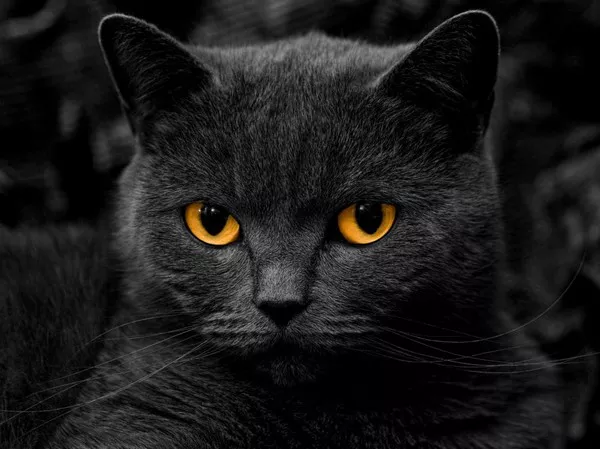Feeding a cat may seem straightforward, but it involves a nuanced understanding of feline nutrition, health needs, and individual preferences. For cat owners, ensuring that their feline friends receive the right amount of food is crucial for maintaining a healthy weight and preventing obesity, which can lead to various health issues. This essay will explore the essential factors to consider when determining how much to feed a 13 lb cat, including nutritional requirements, feeding guidelines, and tips for monitoring and adjusting your cat’s diet.
Understanding Feline Nutrition
Basic Nutritional Needs
Cats are obligate carnivores, meaning their diet must be primarily composed of animal-based proteins. Unlike dogs, who can thrive on a more varied diet, cats require specific nutrients that are predominantly found in meat. The primary components of a cat’s diet include:
Proteins: Essential for growth, maintenance, and repair of tissues. High-quality animal proteins should form the basis of your cat’s diet.
Fats: Provide energy and support cell structure. Fats also help absorb fat-soluble vitamins (A, D, E, and K).
Carbohydrates: While not essential, carbohydrates can provide energy and fiber. However, cats do not require a high-carb diet.
Vitamins and Minerals: Essential for various bodily functions, including bone health, immune function, and metabolic processes.
Energy Requirements
The energy needs of a cat can be calculated using their weight, age, activity level, and overall health status. For a 13 lb cat, the average caloric requirement can be estimated using the following formula:
Resting Energy Requirement (RER): RER (kcal/day) = 70 × (body weight in kg)^0.75
For a 13 lb cat (approximately 5.9 kg), the RER would be:
This is the baseline caloric requirement for a cat at rest. To account for activity level, we multiply the RER by a factor ranging from 1.2 (for sedentary cats) to 2.0 (for very active cats).
Activity Levels
Sedentary: Indoor cats that engage in minimal activity.
Moderately Active: Cats that play occasionally and have access to outdoor space.
Active: Cats that engage in regular play and exercise, particularly those that go outdoors.
For a 13 lb cat, if we assume a moderately active lifestyle, the total daily caloric requirement would be approximately:
Weight Management
Weight management is critical for a cat’s overall health. A 13 lb cat may be at a healthy weight depending on its body condition score (BCS). A BCS of 4-5 out of 9 is generally considered ideal. If your cat is overweight, a weight loss plan should be implemented gradually, aiming for a safe weight loss of about 1% of body weight per week.
Choosing the Right Food
Types of Cat Food
Dry Food (Kibble): Convenient and has a long shelf life. However, it typically contains more carbohydrates and less moisture than wet food.
Wet Food (Canned): Higher in protein and moisture, making it beneficial for hydration and overall health.
Raw Diet: Some owners choose to feed raw food, which can mimic a natural diet but requires careful handling to avoid bacterial contamination.
Reading Labels
When selecting cat food, it’s essential to read the labels carefully. Look for:
High Protein Content: The first ingredient should ideally be a named meat source.
Low Carbohydrate Levels: Cats do not require high levels of carbohydrates.
Balanced Nutrients: Ensure the food meets AAFCO (Association of American Feed Control Officials) standards for complete and balanced nutrition.
Monitoring Your Cat’s Weight
Regular Weigh-Ins
Regularly weighing your cat can help track its weight and ensure it remains within a healthy range. A scale designed for pets can be used at home, or you can visit your veterinarian for accurate measurements.
Body Condition Score (BCS)
Assessing your cat’s body condition score is another method to evaluate its weight. The BCS system typically ranges from 1 to 9, with 1 being severely underweight and 9 being severely overweight. A score of 4-5 is ideal.
Adjusting the Diet
If your cat is gaining or losing weight too rapidly, adjust the food portions accordingly. For weight loss, reduce the caloric intake by about 10-20%. For weight gain, increase the caloric intake by a similar percentage. Always consult your veterinarian before making significant dietary changes.
Special Considerations
Age and Health Status
Kittens, adults, and senior cats have different nutritional needs. Kittens require more calories for growth, while senior cats may need fewer calories and more specialized diets to address age-related health concerns.
Medical Conditions
Certain medical conditions, such as diabetes, kidney disease, or obesity, may require specific dietary adjustments. Consult your veterinarian for tailored advice based on your cat’s health status.
Feeding Schedule
Meal Frequency
The frequency of feeding can also impact your cat’s health. Most adult cats do well with two meals per day, while kittens may need to be fed more frequently.
Free-Feeding vs. Scheduled Feeding
Free-feeding (leaving food out all day) can lead to overeating and obesity. Scheduled feeding (specific meal times) helps regulate portion sizes and can prevent weight gain.
Hydration
Importance of Water
Hydration is crucial for your cat’s health, especially if feeding dry food. Ensure your cat has access to fresh water at all times. Consider providing wet food to increase water intake.
Signs of Dehydration
Monitor your cat for signs of dehydration, such as lethargy, dry gums, and decreased skin elasticity. If you suspect dehydration, consult your veterinarian.
Conclusion
Feeding a 13 lb cat requires careful consideration of its nutritional needs, activity level, and health status. By understanding the basics of feline nutrition, calculating appropriate portion sizes, and monitoring your cat’s weight and health, you can ensure that your feline friend maintains a healthy weight and enjoys a long, happy life. Always consult your veterinarian for personalized advice and recommendations tailored to your cat’s specific needs. With the right approach to feeding, you can provide the best care for your beloved pet.
Related topic:



























